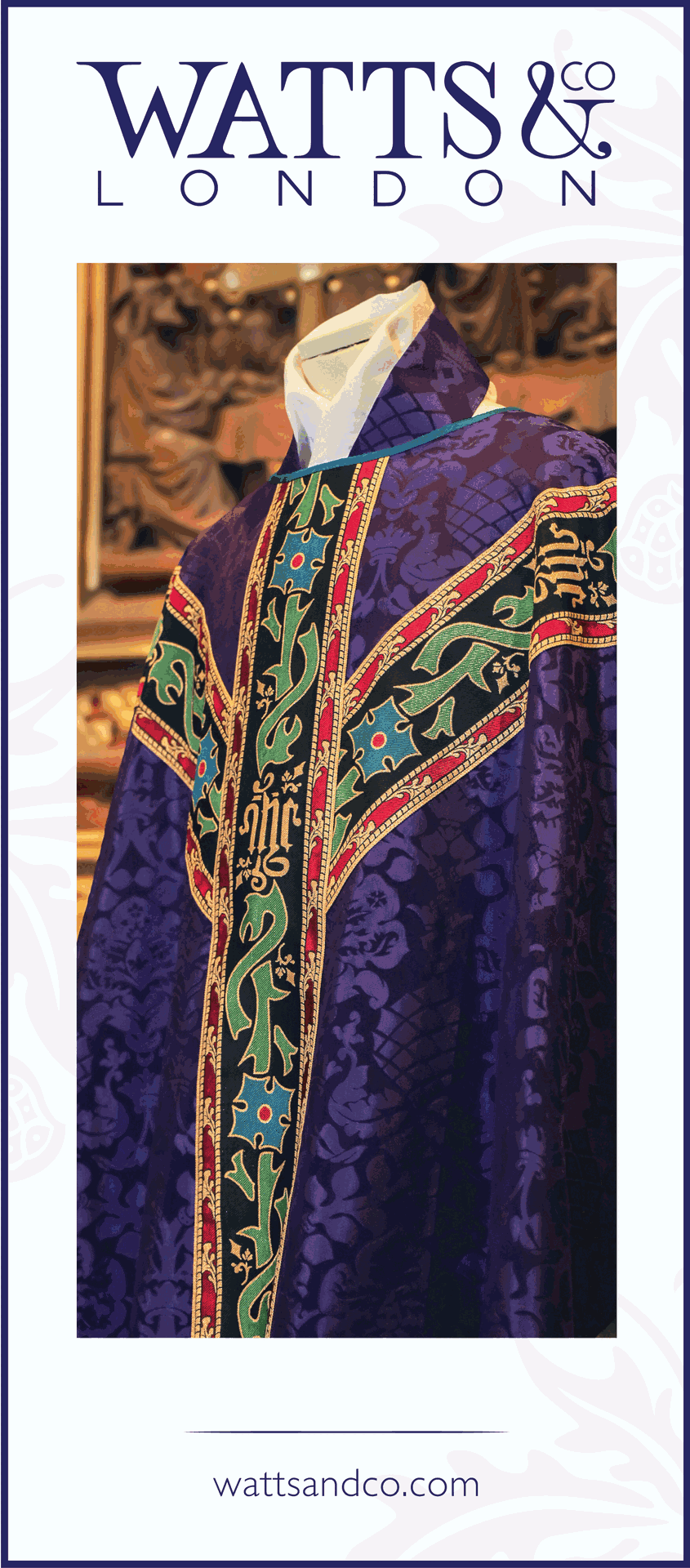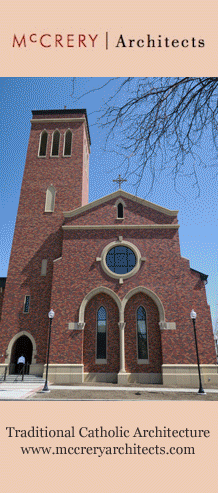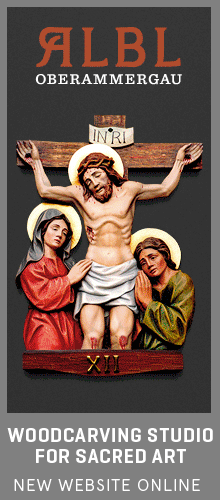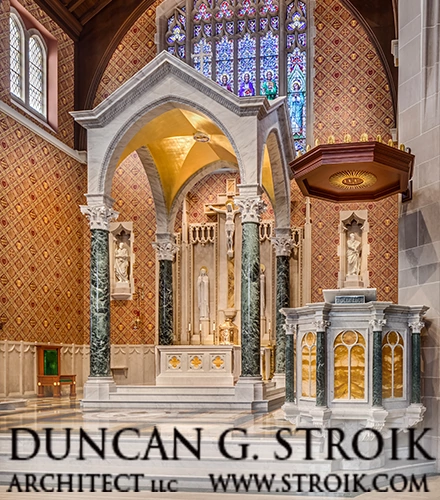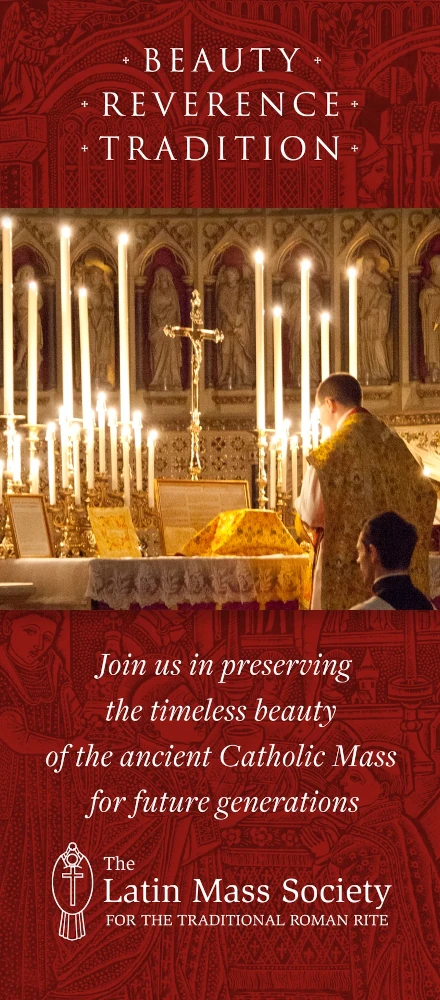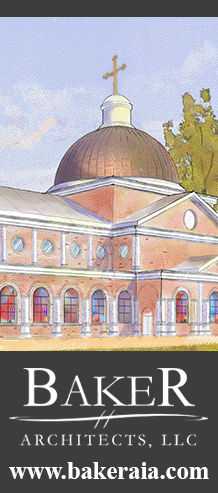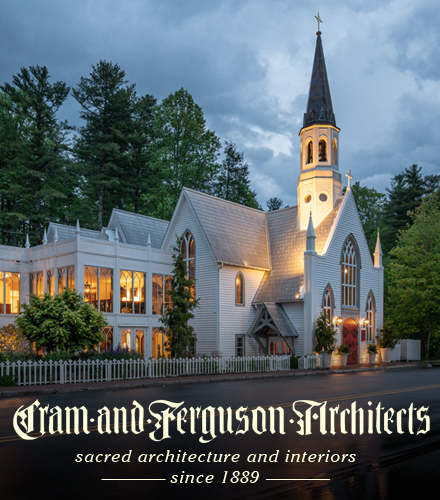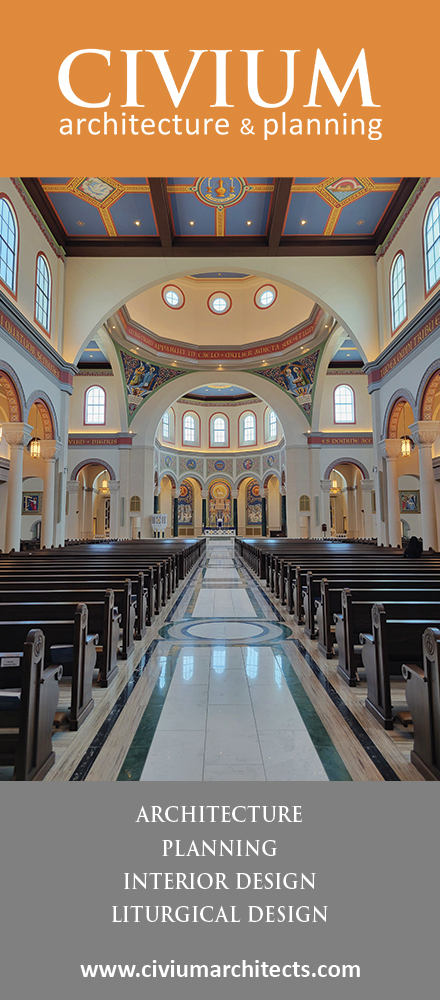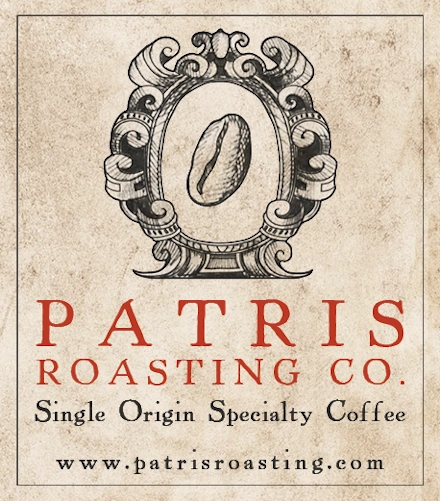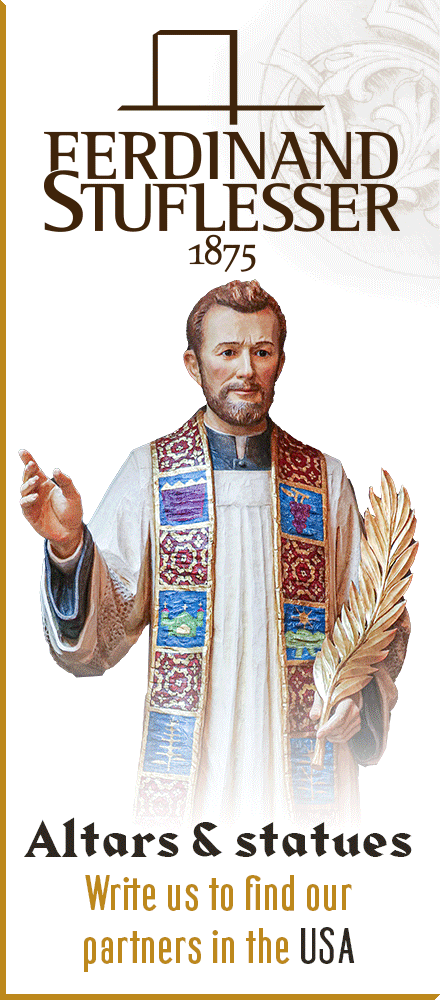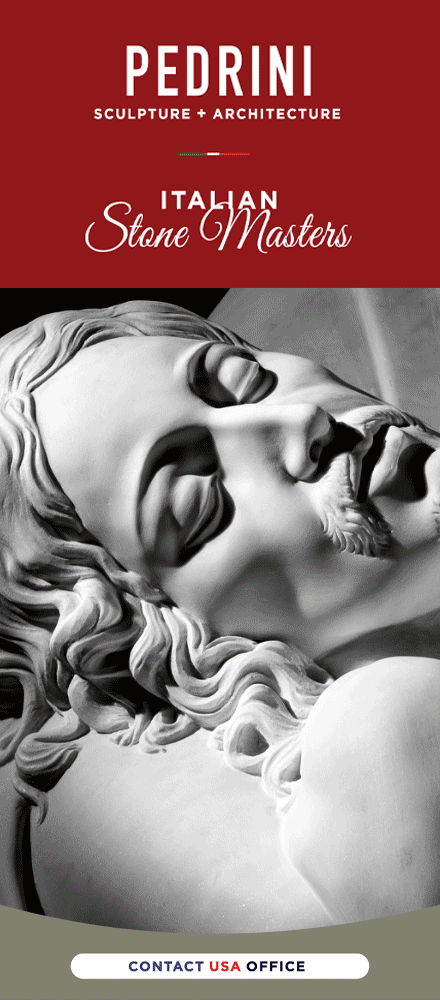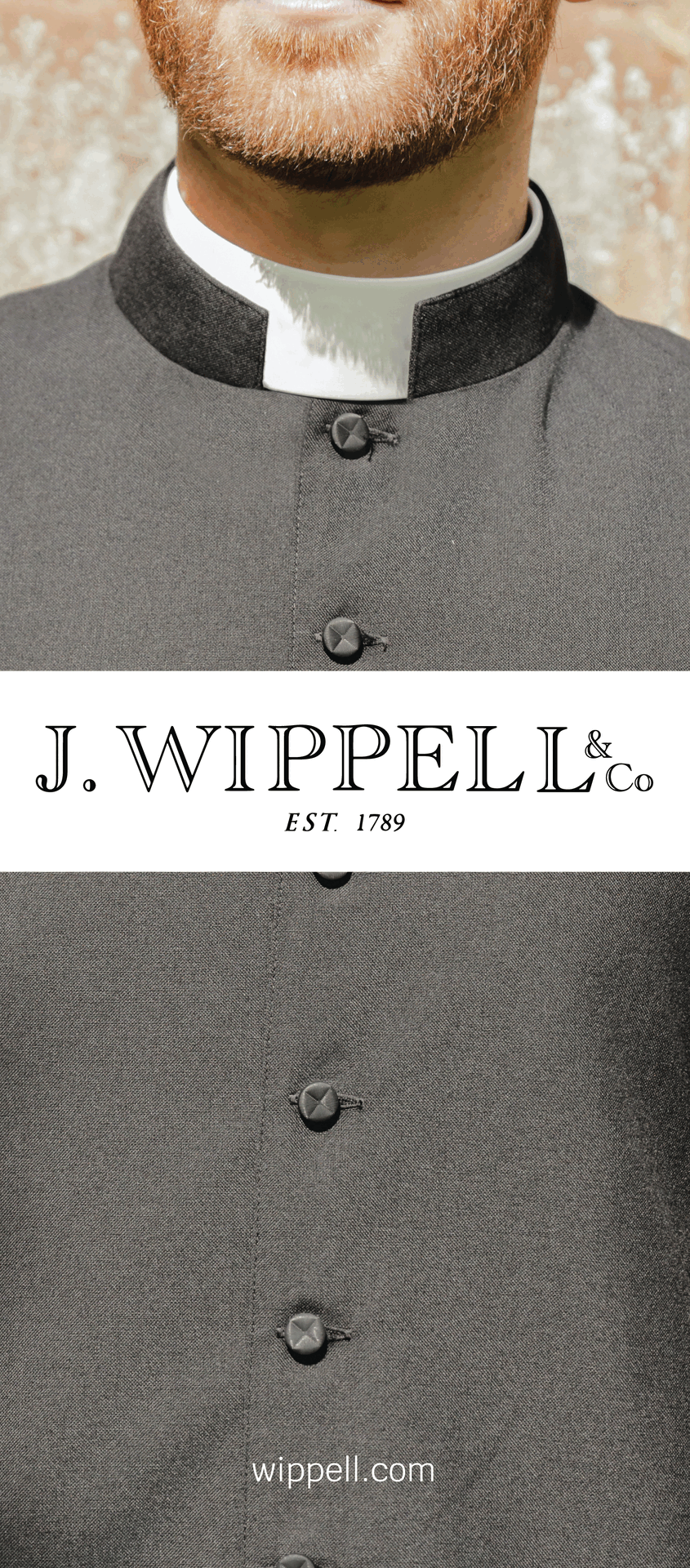An impressive new parish church is soon to be under construction in the diocese of Lafayette in Indiana. It is the brainchild of the local bishop, the Most Rev. William A. Higi and the parish priest of St. John Vianney, Fr. Brian Dudzinski. With this act, Bishop Higi has become one of a small but growing number of episcopal patrons of traditional architecture in the United States. Several local architectural firms have been engaged to build a parish life center which will serve as a temporary church and in time will be incorporated into a larger complex that will include a youth building, grade school, high school, rectory and convent, and most promisingly, a 1,500 seat church designed by HDB/Cram and Ferguson of Boston, the successor firm to that founded by the titanic Ralph Adams Cram, America's single greatest neo-Gothic architect.
The massiveness of the parish plant is encouraging--there are plans to link it with Gothic cloisters, and the local firm of K.R. Montgomery and Associates appears to very open to exploring tradition--but even more exciting is the size and scope of the enormous parish church commission, and that it has been given to a national firm of some repute with considerable experience in the field, and all with the approbation and asistance of the local bishop.
The plans and models at present are strictly schematic and presumably will not reflect the quality level of the completed design, but they look quite promising. First, rather than the usual banal cost-cutting measure of covering a large, broad nave with a low roof, the church will be laid out with a traditional cruciform plan, and given a loftily-roofed nave to balance out its breadth. Mr. Ethan Anthony of HDB/Cram and Ferguson has indicated this to be a priority in the design: “We want a very high elevation — 55-foot high vaulted ceilings will allow thoughts to go upward to heaven [...] The traditional idea of the front of a church is a gate to heaven, and the church will have a sense of elevated space, a sense of the exalted.”
Some naysayers will point to the canted pews in the design, but I would assume this was not Mr. Anthony's choice. In any case, the strikingly long, high nave of the church will compensate for this, giving it a feeling of monumentality and Christological orientation along the long route to the altar. I will also note that it appears the plans we have been given are still somewhat schematic, so the sanctuary design will probably be developed further. We hope the patron and parish planners will develop a fully traditional chancel arrangement--adapted discretely to current conditions, of course--to complement the church's highly directional nave; certainly HDB/C&F would be well-equipped to provide it, judging from their work at Our Lady of Walsingham in Texas. The crossing would certainly make a very fine spot for a baldachino.
There are plans for an adoration chapel--presumably behind the altar, in the apse, to facilitate a two-way tabernacle--an ambulatory of other devotional chapels, and, of course, the west front with its two towers. At this stage I am not sure how the basic design of the principal elevation of the church will be fleshed out but HDB/Cram and Ferguson's design appears Gothic and traditional but not by any means slavish or stereotyped, which is certainly what the firm's founder--one of the most inventive of his day, especially when working within a great tradition--would have desired. Undoubtedly this is a project worth watching.
Wednesday, June 25, 2008
A New Gothic Church For Lafayette, Indiana
MatthewMore recent articles:
Spy Wednesday 2025Gregory DiPippo
It is worthy and just that we should always give Thee thanks, Lord, holy Father, eternal and almighty God, through Jesus Christ, Thy Son, our Lord, Who willed to suffer for the impious, and be unjustly condemned for the wicked; Who forgave the praying thief his crime, promising him Paradise by His most agreeable will, Whose death wiped away our cri...
The Chrism Mass: Tradition, Reform and Change (Part 1) - Guest Article by Abbé Jean-Pierre HermanGregory DiPippo
We are very grateful to Fr Jean-Pierre Herman for sharing with us this important article about the Chrism Mass and its recent reforms. The French original was published two days ago on the website of the Schola Sainte-Cécile as a single article; it will be published here in two parts. Fr Herman is professor of liturgy at the Good Shepherd Institute...
The 2nd Adeodatus Conference on Catholic Education, June 18-21 at Belmont Abbey CollegeDavid Clayton
Find out more and register here.This four-day gathering brings together educators, scholars, and Catholic thought leaders to explore the integral formation of students and teachers in mind, body, and spirit. Each day will focus on a distinct theme, beginning with Sound Bodies & Keen Minds, addressing topics like memory, mimesis, and freedom fro...
Guest Review of Mons. Stefan Heid’s Altar and Church: Principles of Liturgy from Early ChristianityGregory DiPippo
We are grateful to Dr Michael Coughlin, Professor of Theology at Saint John’s Seminary in Boston, for sharing with NLM this review of Monsignor Stefan Heid’s book Altar and Church: Principles of Liturgy from Early Christianity. Mons. Heid is a priest of the archdiocese of Cologne, Germany; he has taught liturgy and hagiography at the Pontific...
A Liturgical Oddity of Holy MondayGregory DiPippo
In the Missal of St Pius V, there is a very small number of days on which two Scriptural lessons are read before the Gospel: the Wednesdays of the Embertides, of the fourth week of Lent and Holy Week, and Good Friday. As I have described elsewhere, these readings are actually part of a block which is inserted into the Mass between the Kyrie and the...
Palm Sunday 2025Gregory DiPippo
Thou didst incline the heavens, and come down to the earth as one merciful. Thou didst not leave the throne of the Cherubim, Thou sat upon a colt for our sake, o Savior of the world! And the children of the Hebrews came to meet Thee, and taking palms in their hands, they blessed Thee: “Blessed art Thou who hast come to the Passion of Thy own ...
Superb Recordings of the Hymns of PassiontideGregory DiPippo
As we are about to enter Holy Week, here are two genuinely outstanding recordings of the hymns for Passiontide Vexilla Regis and Pange lingua. These come from an album released by the choir of Westminster Cathedral in October of 2023, titled Vexilla Regis: A sequence of music from Palm Sunday to Holy Saturday; the 21 tracks are also ...
The Mass of Passion Thursday - ContinuedGregory DiPippo
In yesterday’s article, I described the Roman station church of Passion Thursday as a place of exile for Eastern iconodule monks whom the persecution of the iconoclast Byzantine emperors had driven into Italy. This basilica is dedicated to St Apollinaris, the first bishop of Ravenna, who is traditionally said to have been a disciple of St Peter, se...
The Offertory Incensation, Part IIMichael P. Foley
Cardinal Hayes incensing the altar at the opening Mass for the 7th National Eucharistic Congress at the Public Auditorium in Cleveland, 1935Lost in Translation #123 When the priest incenses the altar, he recites Psalm 140, 2-4: Dirigátur, Dómine, oratio mea, sicut incensum in conspectu tuo: Elevatio manuum meárum sacrificium vespertínum. Pone, Dó...
A Choirmaster’s Reflections on the Twelve Passion Gospels: Guest Article by Fr. Herman MajkrzakGregory DiPippo
One of the most powerful services of the extremely rich Byzantine Holy Week is Matins of Great and Holy Friday, known as the Matins of the Twelve Gospels. This consists of the (mostly) regular order of Matins as it is celebrated in Lent, into which Twelve Gospel readings of the Lord’s Passion are added at various points. I am very grateful to my fr...


